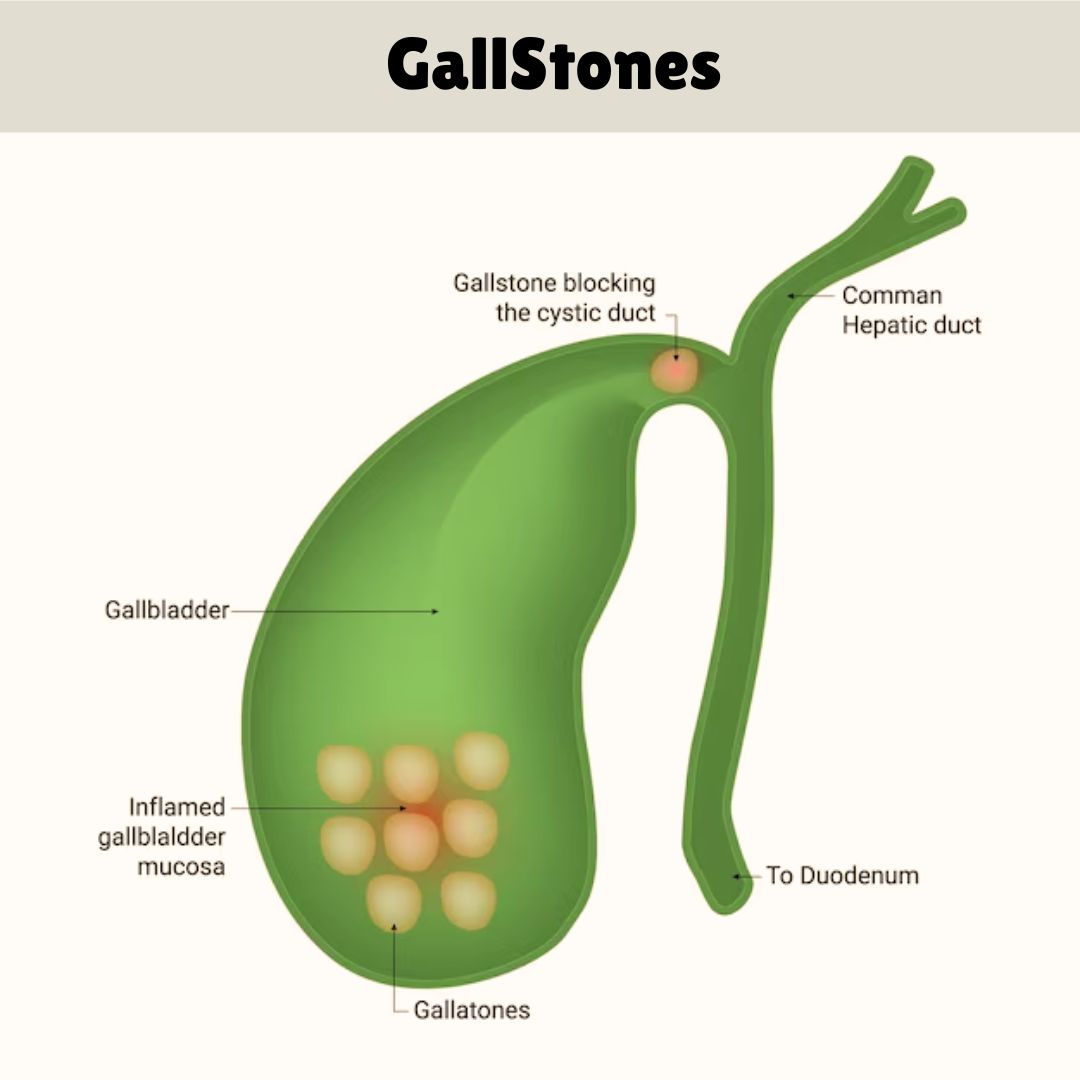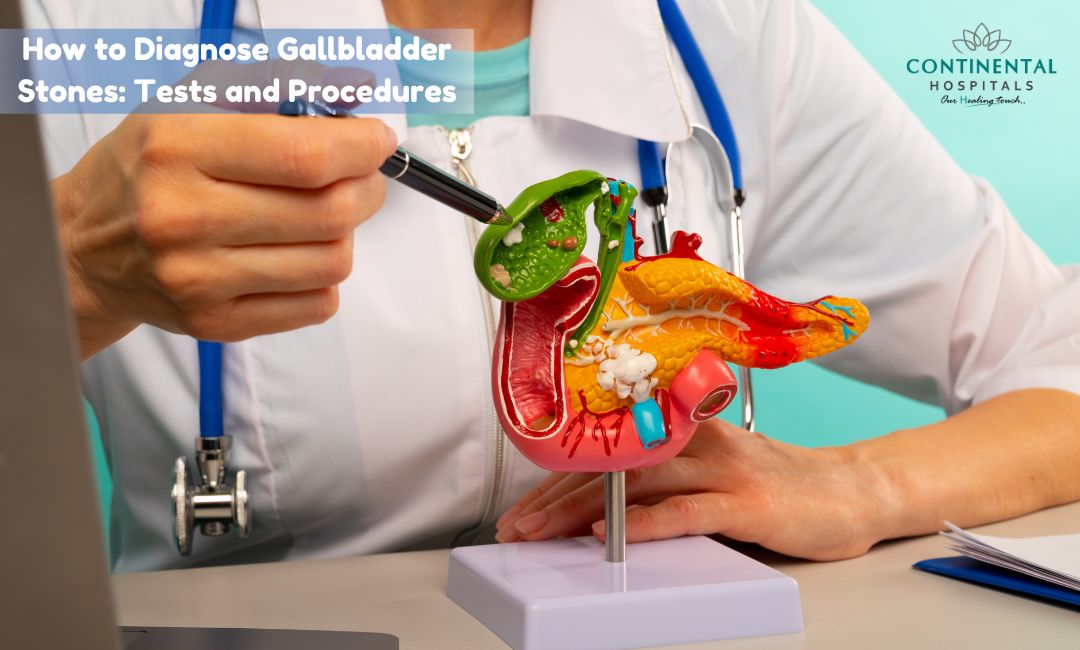Gallbladder stones, or gallstones, are small, hard deposits that form in the gallbladder, a small organ located under the liver. They can cause pain and other symptoms, making it important to diagnose them accurately. If you’re experiencing symptoms or are concerned about gallstones, understanding the diagnostic process can help you navigate your healthcare journey more effectively. In this blog, we’ll explore the tests and procedures used to diagnose gallbladder stones and discuss treatment options available at Continental Hospitals.
What Are Gallbladder Stones?
Gallstones are solid particles that develop in the gallbladder, which stores bile produced by the liver. Bile helps digest fats, and when it becomes too concentrated, it can form stones. Gallstones come in two main types:
Cholesterol Gallstones: The most common type, formed primarily from hardened cholesterol.
Pigment Gallstones: Smaller and darker, made up of bilirubin, a substance produced from the breakdown of red blood cells.
Gallstones can vary in size and may be as small as a grain of sand or as large as a golf ball. While some people with gallstones experience no symptoms, others may suffer from pain and discomfort.
Symptoms of Gallbladder Stones
- Abdominal Pain: Especially in the upper right side or middle of the abdomen.
- Nausea and Vomiting: Often occurring after eating fatty foods.
- Indigestion: Feeling bloated or gassy.
- Jaundice: Yellowing of the skin or eyes, if the stones block bile ducts.

Diagnostic Tests and Procedures for Gallbladder Stones
Diagnosing gallbladder stones typically involves a combination of medical history, physical examination, and diagnostic tests. Here’s an overview of the most common methods:
Medical History and Physical Exam
Your doctor will start by asking about your symptoms and medical history. They may also perform a physical exam, pressing on your abdomen to check for pain or tenderness. This initial assessment helps guide further testing.
Ultrasound
The most common and effective test for diagnosing gallstones is an abdominal ultrasound. This non-invasive procedure uses sound waves to create images of the gallbladder and surrounding areas. Ultrasound is particularly useful because it can detect both the presence and size of gallstones and is generally safe and painless.
CT Scan
A computed tomography (CT) scan uses X-rays to create detailed cross-sectional images of the body. Although not as commonly used for gallstones as ultrasound, a CT scan can provide additional information, especially if the diagnosis is unclear or if complications are suspected.
HIDA Scan (Hepatobiliary Iminodiacetic Acid Scan)
A HIDA scan, also known as a cholescintigraphy, involves injecting a small amount of radioactive material into a vein. This tracer is absorbed by the liver and gallbladder, allowing a special camera to capture images of how the gallbladder is functioning. A HIDA scan is useful for evaluating gallbladder function and detecting conditions such as acute cholecystitis (inflammation of the gallbladder).
Endoscopic Ultrasound (EUS)
An endoscopic ultrasound involves inserting a thin, flexible tube with an ultrasound probe down the throat and into the stomach and small intestine. This test provides detailed images of the gallbladder and bile ducts and is particularly useful for detecting small stones that may not be visible on a regular ultrasound.
ERCP (Endoscopic Retrograde Cholangiopancreatography)
ERCP is a procedure that combines endoscopy and fluoroscopy (a type of X-ray). A thin, flexible tube is inserted through the mouth and into the stomach and small intestine. A contrast dye is then injected into the bile ducts to make them visible on X-ray images. ERCP can help diagnose gallstones and is also used to remove stones or treat other complications.
Magnetic Resonance Cholangiopancreatography (MRCP)
MRCP is an MRI-based imaging technique used to visualize the bile ducts, gallbladder, and pancreatic duct. It is a non-invasive procedure that provides detailed images and can help detect gallstones, blockages, or other abnormalities. MRCP is often used when other imaging tests are inconclusive or when there is a need for a more detailed view.
Blood Tests
Blood tests may be ordered to check for signs of infection, inflammation, or liver problems. While blood tests alone cannot diagnose gallstones, they provide important information about your overall health and help identify potential complications.
Treatment Options at Continental Hospitals
If diagnosed with gallstones, treatment options are available at Continental Hospitals, one of Hyderabad’s leading healthcare providers. The hospital offers a range of treatments to manage and treat gallbladder stones effectively:
- Medication: For some patients, medications can help dissolve cholesterol gallstones, though this is less common.
- Surgery: The most common treatment for symptomatic gallstones is cholecystectomy, a surgical procedure to remove the gallbladder. Continental Hospitals provides minimally invasive laparoscopic surgery, which offers faster recovery times and less post-operative discomfort.
- Lifestyle and Dietary Changes: In some cases, dietary adjustments and lifestyle changes may be recommended to manage symptoms and prevent further stone formation.
Conclusion
Diagnosing gallbladder stones involves a combination of medical history, physical examination, and various diagnostic tests. Each test has its own strengths and can provide valuable information about the presence, size, and impact of gallstones on your health. If you suspect you have gallstones or are experiencing symptoms, it’s important to consult a healthcare professional for a thorough evaluation.
If you experience these symptoms, it’s essential to consult our best gastroenterologist for proper diagnosis and treatment.
Related Blogs:
.webp)














